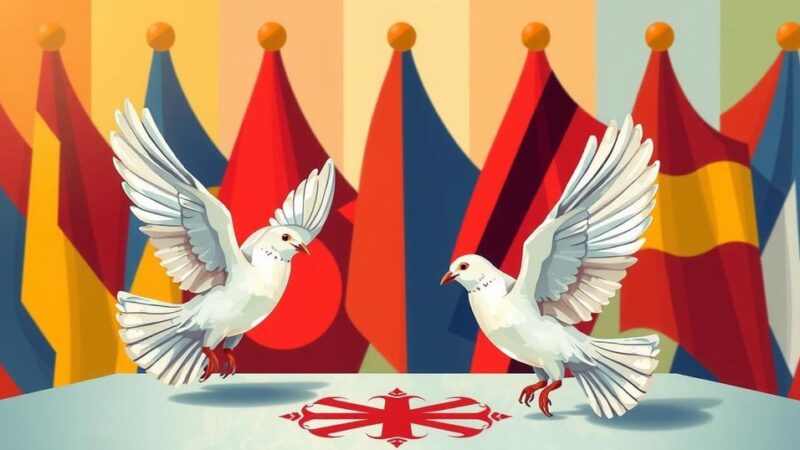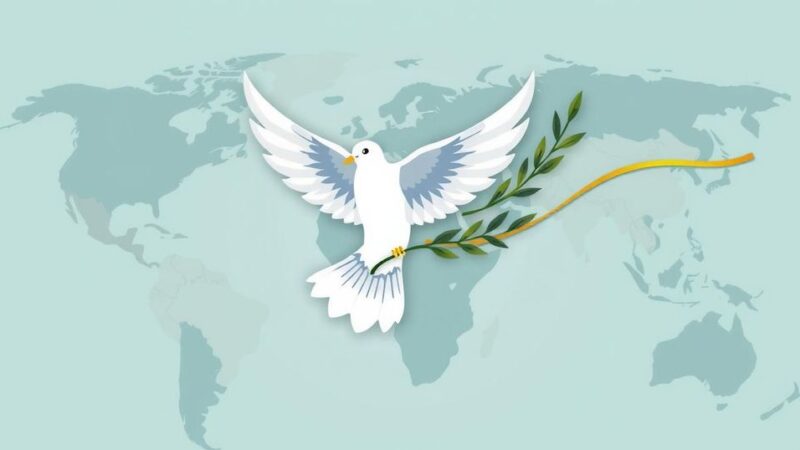Colombia’s fragile peace process is at risk due to increasing violence from guerrilla groups, particularly the ELN and dissident factions of FARC. Recent attacks have underscored the threat to governmental authority, while demobilized fighters face dangers from rival factions. President Petro’s peace strategy hopes to disarm these groups, but funding cuts and repeated negotiation failures complicate efforts. Local organizations are critical in facilitating the transition to peace despite ongoing challenges.
Colombia is witnessing a troubling increase in political and criminal violence. The National Liberation Army (ELN) conducted multiple bombings in Cúcuta, injuring civilians and prompting the deployment of 1,200 soldiers. Meanwhile, dissidents from the Revolutionary Armed Forces of Colombia (FARC) captured security personnel in Cauca, voicing their opposition to government coca eradication efforts. These developments threaten the country’s peace process, as various armed groups remain active.
Historically, Colombia has faced one of Latin America’s longest insurgencies, beginning with the rise of FARC in the 1960s, which aimed to establish a communist government. The situation escalated in the late 1990s with the emergence of the drug trade, leading FARC to control significant rural areas and push government authority back to urban centers.
In response to leftist insurgencies, paramilitary groups formed under the United Self-Defense Forces, some of which disbanded through a demobilization program from 2002 to 2006. Nevertheless, the conflict has led to over a quarter of a million deaths and many more displaced individuals, with ongoing issues related to missing persons.
The peace agreement signed with FARC in 2016 aimed to end the insurgency. It included plans for FARC’s demobilization, justice for victims, and promises to invest in rural areas. Former FARC members were guaranteed political representation, allowing their transition from guerrillas to a political party. However, steadfast resistance from other armed groups persists, particularly the ELN, which has consistently rejected peace negotiations since 1964.
The ELN continues violent operations, while dissident factions of FARC have formed their own groups, such as the Central General Staff and Segunda Marquetalia. Demobilized FARC members now face threats from these dissident factions, increasing the risk of rearmament among former rebels. Concurrently, neo-paramilitary groups like the Clan del Golfo are deeply involved in drug trafficking, posing additional challenges for Colombia’s security forces.
Following his 2022 election, President Gustavo Petro introduced a new peace strategy to disarm remaining insurgents and criminal organizations. Petro, a former M-19 guerrilla, aimed for comprehensive peace talks, but past efforts have faltered. Funding cuts from the U.S. under President Trump have further complicated the situation, as they hindered community support efforts for poverty alleviation and anti-gang initiatives.
Despite these challenges, local community organizations have found success in reintegrating demobilized fighters into civilian life. Initiatives like the Medellín-based Peace Classrooms Foundation utilize former combatants’ experiences to educate about the perils of violence, addressing the social injustices that drive conflict. The persistent violence indicates that the internal conflict in Colombia remains unresolved and highlights the fragility of the peace process.
Colombia’s peace process faces significant threats from renewed guerrilla violence and resistance from various armed factions. While the 2016 peace agreement with FARC marked a crucial step toward resolution, ongoing insurgent activities and neo-paramilitary operations jeopardize stability. President Petro’s initiatives for peace have encountered challenges, particularly due to external funding cuts. However, local organizations continue to play a vital role in promoting reconciliation and addressing the roots of conflict, emphasizing that peace in Colombia remains precarious and requires continued effort.
Original Source: sightmagazine.com.au






